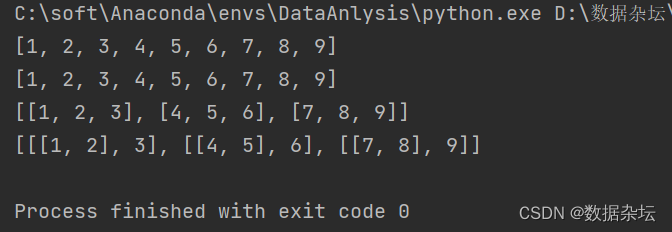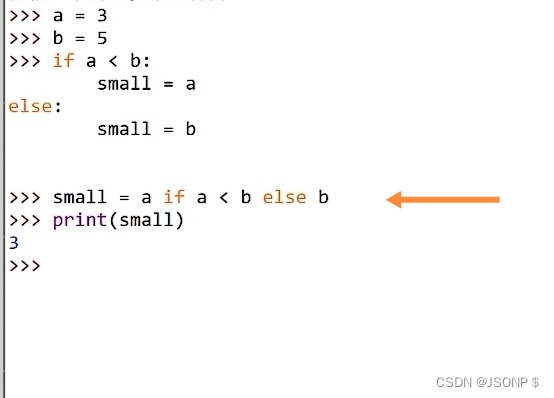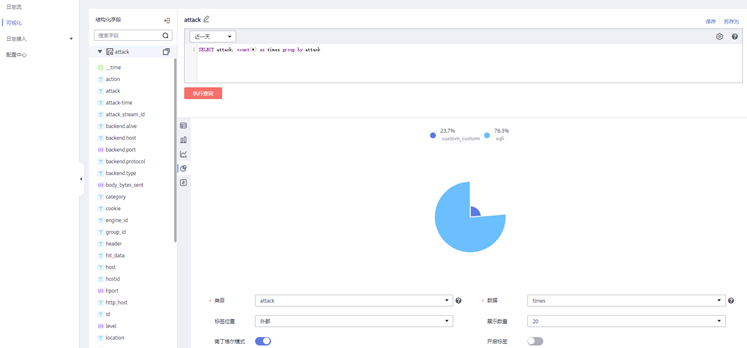tictoc13-
- tictoc13 子类化cMessage生成消息,随机目标地址
- tictoc 14 在13的基础上增加两变量显示于仿真界面
- tictoc 15 模型数据输出为直方图
tictoc13 子类化cMessage生成消息,随机目标地址
- 在这一步中,目标地址不再是节点2——我们绘制了一个随机的目的地,并将目标地址添加到消息中。
- 最好的方法是子类化cMessage并添加destination作为数据成员。
手工编写消息类通常是令人厌烦的,因为它包含很多样板代码,所以我们让omnet++为我们生成该类。 - 消息类规范在tictoc13.msg——tictoc13_m.h和.cc将从这个文件自动生成。
- 为了延长模型的执行时间,在消息到达目的地后,目标节点将生成另一个带有随机目的地地址的消息,以此类推。
tictoc13.msg
message TicTocMsg13
{int source;int destination;int hopCount = 0;
}
ned
simple Txc13
{parameters:@display("i=block/routing");gates:inout gate[];
}network Tictoc13
{types:channel Channel extends ned.DelayChannel {delay = 100ms;}submodules:tic[6]: Txc13;connections:tic[0].gate++ <--> Channel <--> tic[1].gate++;tic[1].gate++ <--> Channel <--> tic[2].gate++;tic[1].gate++ <--> Channel <--> tic[4].gate++;tic[3].gate++ <--> Channel <--> tic[4].gate++;tic[4].gate++ <--> Channel <--> tic[5].gate++;
}
cc
#include <stdio.h>
#include <string.h>
#include <omnetpp.h>using namespace omnetpp;// Include a generated file: the header file created from tictoc13.msg.
// It contains the definition of the TictocMsg10 class, derived from
// cMessage.包含一个生成的文件:从tictoc13.msg创建的头文件。它包含了派生自cMessage的TictocMsg10类的定义。
#include "tictoc13_m.h"/*** In this step the destination address is no longer node 2 -- we draw a* random destination, and we'll add the destination address to the message.** The best way is to subclass cMessage and add destination as a data member.* Hand-coding the message class is usually tiresome because it contains* a lot of boilerplate code, so we let OMNeT++ generate the class for us.* The message class specification is in tictoc13.msg -- tictoc13_m.h* and .cc will be generated from this file automatically.** To make the model execute longer, after a message arrives to its destination* the destination node will generate another message with a random destination* address, and so forth.* 1. 在这一步中,目标地址不再是节点2——我们绘制了一个随机的目的地,并将目标地址添加到消息中。
2. 最好的方法是子类化cMessage并添加destination作为数据成员。
手工编写消息类通常是令人厌烦的,因为它包含很多样板代码,所以我们让omnet++为我们生成该类。
3. 消息类规范在tictoc13.msg——tictoc13_m.h和.cc将从这个文件自动生成。
4. 为了延长模型的执行时间,在消息到达目的地后,目标节点将生成另一个带有随机目的地地址的消息,以此类推。*/
class Txc13 : public cSimpleModule
{protected:virtual TicTocMsg13 *generateMessage();virtual void forwardMessage(TicTocMsg13 *msg);virtual void initialize() override;virtual void handleMessage(cMessage *msg) override;
};Define_Module(Txc13);void Txc13::initialize()
{// Module 0 sends the first message ,模块0发送第一个消息if (getIndex() == 0) {// Boot the process scheduling the initial message as a self-message.TicTocMsg13 *msg = generateMessage();scheduleAt(0.0, msg);}
}void Txc13::handleMessage(cMessage *msg)
{TicTocMsg13 *ttmsg = check_and_cast<TicTocMsg13 *>(msg); //接收到的消息进行类型转换//如果消息到达目的地址if (ttmsg->getDestination() == getIndex()) {// Message arrived.EV << "Message " << ttmsg << " arrived after " << ttmsg->getHopCount() << " hops.\n";bubble("ARRIVED, starting new one!");delete ttmsg;// Generate another one.EV << "Generating another message: ";TicTocMsg13 *newmsg = generateMessage();EV << newmsg << endl;forwardMessage(newmsg);}else {// We need to forward the message.forwardMessage(ttmsg);}
}TicTocMsg13 *Txc13::generateMessage()
{// Produce source and destination addresses.生成源地址和目的地址。int src = getIndex(); // our module index我们的模块索引 0 int n = getVectorSize(); // module vector size模块矢量尺寸 ,共有6个节点,即模块int dest = intuniform(0, n-2); //0-4 均匀分布if (dest >= src) dest++;char msgname[20];sprintf(msgname, "tic-%d-to-%d", src, dest);// Create message object and set source and destination field.TicTocMsg13 *msg = new TicTocMsg13(msgname);msg->setSource(src);msg->setDestination(dest);return msg;
}void Txc13::forwardMessage(TicTocMsg13 *msg)
{// Increment hop count. 增加跳数。msg->setHopCount(msg->getHopCount()+1);// Same routing as before: random gate.路由和之前一样,随机门。int n = gateSize("gate");int k = intuniform(0, n-1);EV << "Forwarding message " << msg << " on gate[" << k << "]\n";send(msg, "gate$o", k);
}

tictoc 14 在13的基础上增加两变量显示于仿真界面
- 在此步骤中,我们跟踪发送和接收的消息数量,并将其显示在图标上方。
WATCH(numSent); WATCH(numReceived);//收发次数的变量显示在仿真界面的模块上
msg
message TicTocMsg14
{int source;int destination;int hopCount = 0;
}
ned
simple Txc14
{parameters:@display("i=block/routing");gates:inout gate[];
}network Tictoc14
{types:channel Channel extends ned.DelayChannel {delay = 100ms;}submodules:tic[6]: Txc14;connections:tic[0].gate++ <--> Channel <--> tic[1].gate++;tic[1].gate++ <--> Channel <--> tic[2].gate++;tic[1].gate++ <--> Channel <--> tic[4].gate++;tic[3].gate++ <--> Channel <--> tic[4].gate++;tic[4].gate++ <--> Channel <--> tic[5].gate++;
}
cc
#include <stdio.h>
#include <string.h>
#include <omnetpp.h>
#include "tictoc14_m.h"using namespace omnetpp;/*** In this step we keep track of how many messages we send and received,* and display it above the icon.* 在此步骤中,我们跟踪发送和接收的消息数量,并将其显示在图标上方。*/
class Txc14 : public cSimpleModule
{private:long numSent;long numReceived;protected:virtual TicTocMsg14 *generateMessage();virtual void forwardMessage(TicTocMsg14 *msg);virtual void refreshDisplay() const override;virtual void initialize() override;virtual void handleMessage(cMessage *msg) override;
};Define_Module(Txc14);void Txc14::initialize()
{// Initialize variablesnumSent = 0;numReceived = 0;WATCH(numSent);//收发次数的变量显示在仿真界面的模块上WATCH(numReceived);// Module 0 sends the first messageif (getIndex() == 0) {// Boot the process scheduling the initial message as a self-message.TicTocMsg14 *msg = generateMessage();numSent++;scheduleAt(0.0, msg);}
}void Txc14::handleMessage(cMessage *msg)
{TicTocMsg14 *ttmsg = check_and_cast<TicTocMsg14 *>(msg);if (ttmsg->getDestination() == getIndex()) {// Message arrivedint hopcount = ttmsg->getHopCount();EV << "Message " << ttmsg << " arrived after " << hopcount << " hops.\n";numReceived++;delete ttmsg;bubble("ARRIVED, starting new one!");// Generate another one.EV << "Generating another message: ";TicTocMsg14 *newmsg = generateMessage();EV << newmsg << endl;forwardMessage(newmsg);numSent++;}else {// We need to forward the message.forwardMessage(ttmsg);}
}TicTocMsg14 *Txc14::generateMessage()
{// Produce source and destination addresses.int src = getIndex(); // our module indexint n = getVectorSize(); // module vector sizeint dest = intuniform(0, n-2);if (dest >= src)dest++;char msgname[20];sprintf(msgname, "tic-%d-to-%d", src, dest);// Create message object and set source and destination field.TicTocMsg14 *msg = new TicTocMsg14(msgname);msg->setSource(src);msg->setDestination(dest);return msg;
}void Txc14::forwardMessage(TicTocMsg14 *msg)
{// Increment hop count.msg->setHopCount(msg->getHopCount()+1);// Same routing as before: random gate.int n = gateSize("gate");int k = intuniform(0, n-1);EV << "Forwarding message " << msg << " on gate[" << k << "]\n";send(msg, "gate$o", k);
}void Txc14::refreshDisplay() const
{char buf[40];sprintf(buf, "rcvd: %ld sent: %ld", numReceived, numSent);getDisplayString().setTagArg("t", 0, buf);
}
tictoc 15 模型数据输出为直方图
- 这个模型足够令人兴奋,因此我们可以收集一些统计数据。我们将在输出向量中记录每条消息到达时的跳数。输出向量被写入omnetpp。vec文件,可以用Plove程序可视化。
- 我们还收集基本统计数据(最小值、最大值、平均值、std.dev.)和关于跳数的直方图,我们将在模拟结束时打印出这些数据。
- 仿真结束调用finish()
recordScalar("#sent", numSent);//将一个double变量记录到标量结果文件中。
msg
message TicTocMsg15
{int source;int destination;int hopCount = 0;
}
ned
simple Txc15
{parameters:@display("i=block/routing");gates:inout gate[];
}network Tictoc15
{types:channel Channel extends ned.DelayChannel {delay = 100ms;}submodules:tic[6]: Txc15;connections:tic[0].gate++ <--> Channel <--> tic[1].gate++;tic[1].gate++ <--> Channel <--> tic[2].gate++;tic[1].gate++ <--> Channel <--> tic[4].gate++;tic[3].gate++ <--> Channel <--> tic[4].gate++;tic[4].gate++ <--> Channel <--> tic[5].gate++;
}cc
#include <stdio.h>
#include <string.h>
#include <omnetpp.h>
#include "tictoc15_m.h"using namespace omnetpp;/*** This model is exciting enough so that we can collect some statistics.* We'll record in output vectors the hop count of every message upon arrival.* Output vectors are written into the omnetpp.vec file and can be visualized* with the Plove program.** We also collect basic statistics (min, max, mean, std.dev.) and histogram* about the hop count which we'll print out at the end of the simulation.* 这个模型足够令人兴奋,因此我们可以收集一些统计数据。我们将在输出向量中记录每条消息到达时的跳数。输出向量被写入omnetpp。vec文件,可以用Plove程序可视化。我们还收集基本统计数据(最小值、最大值、平均值、std.dev.)和关于跳数的直方图,我们将在模拟结束时打印出这些数据。*/
class Txc15 : public cSimpleModule
{private:long numSent;long numReceived;cHistogram hopCountStats;//直方图类对象cOutVector hopCountVector;//输出向量protected:virtual TicTocMsg15 *generateMessage();//msg作消息virtual void forwardMessage(TicTocMsg15 *msg);virtual void initialize() override;virtual void handleMessage(cMessage *msg) override;// The finish() function is called by OMNeT++ at the end of the simulation://仿真结束之后会调用virtual void finish() override;
};Define_Module(Txc15);void Txc15::initialize()
{// Initialize variablesnumSent = 0;numReceived = 0;WATCH(numSent);WATCH(numReceived);hopCountStats.setName("hopCountStats");hopCountVector.setName("HopCount");// Module 0 sends the first messageif (getIndex() == 0) {// Boot the process scheduling the initial message as a self-message.TicTocMsg15 *msg = generateMessage();scheduleAt(0.0, msg);}
}void Txc15::handleMessage(cMessage *msg)
{TicTocMsg15 *ttmsg = check_and_cast<TicTocMsg15 *>(msg);if (ttmsg->getDestination() == getIndex()) {// Message arrivedint hopcount = ttmsg->getHopCount();EV << "Message " << ttmsg << " arrived after " << hopcount << " hops.\n";bubble("ARRIVED, starting new one!");// update statistics.更新统计数据numReceived++;hopCountVector.record(hopcount);hopCountStats.collect(hopcount);delete ttmsg;// Generate another one.EV << "Generating another message: ";TicTocMsg15 *newmsg = generateMessage();EV << newmsg << endl;forwardMessage(newmsg);numSent++;}else {// We need to forward the message.forwardMessage(ttmsg);}
}TicTocMsg15 *Txc15::generateMessage()
{// Produce source and destination addresses.int src = getIndex();int n = getVectorSize();int dest = intuniform(0, n-2);if (dest >= src)dest++;char msgname[20];sprintf(msgname, "tic-%d-to-%d", src, dest);// Create message object and set source and destination field.TicTocMsg15 *msg = new TicTocMsg15(msgname);msg->setSource(src);msg->setDestination(dest);return msg;
}void Txc15::forwardMessage(TicTocMsg15 *msg)
{// Increment hop count.msg->setHopCount(msg->getHopCount()+1);// Same routing as before: random gate.int n = gateSize("gate");int k = intuniform(0, n-1);EV << "Forwarding message " << msg << " on gate[" << k << "]\n";send(msg, "gate$o", k);
}void Txc15::finish()
{// This function is called by OMNeT++ at the end of the simulation.EV << "Sent: " << numSent << endl;EV << "Received: " << numReceived << endl;EV << "Hop count, min: " << hopCountStats.getMin() << endl;EV << "Hop count, max: " << hopCountStats.getMax() << endl;EV << "Hop count, mean: " << hopCountStats.getMean() << endl;EV << "Hop count, stddev: " << hopCountStats.getStddev() << endl;recordScalar("#sent", numSent);//将一个double变量记录到标量结果文件中。recordScalar("#received", numReceived);hopCountStats.recordAs("hop count");
}








